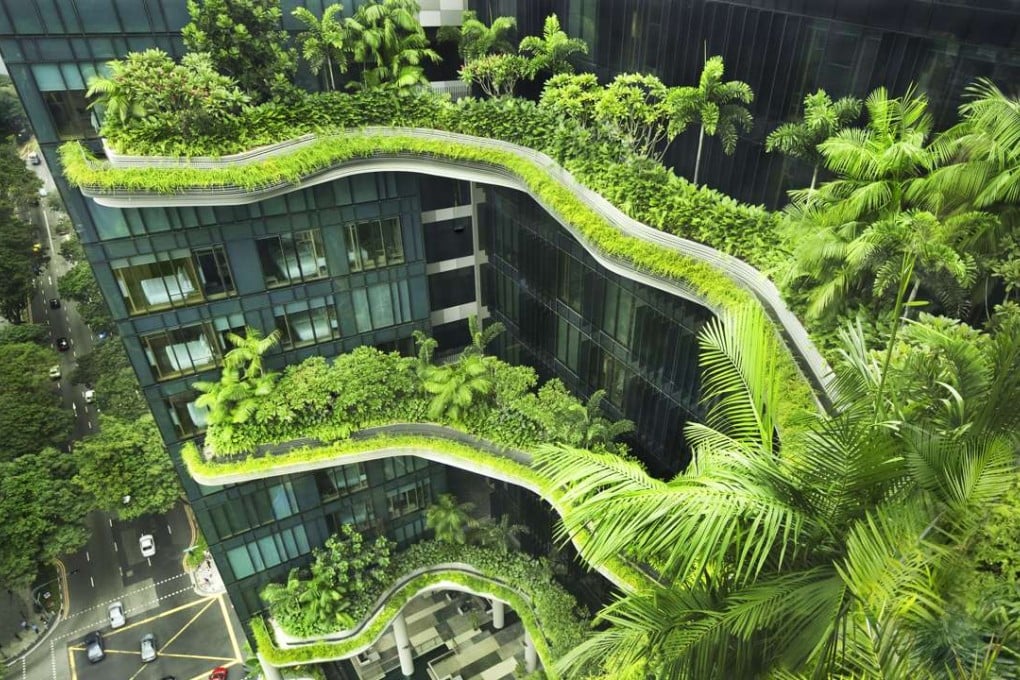Buildings that blend with nature: why Singapore has them in abundance and Hong Kong doesn’t yet
Architects in Lion City have embraced the idea that humans have an innate desire to connect with nature and incorporated it in building design; Hong Kong’s green walls and podium gardens are a step towards this

You begin to notice them as soon as you arrive in Singapore: buildings overwhelmed by greenery, steel and glass seemingly reclaimed by the tropical landscape. Then, as you make your way through the city, you notice how many spaces are open to the air, despite the constant heat and humidity that makes every afternoon feel like the dog days of a Hong Kong summer. Singapore isn’t a city in a garden; it’s a city that is a garden.
Richard Hassell and Wong Mun Summ deserve much of the credit. Their Singapore-based architectural practice, WOHA, has dedicated itself to biophilic design, a concept outlined in their new book, Garden City Mega City, which explores the firm’s work and its implications. “It’s something that’s part of us as human beings,” says Hassell. “We love nature.”
We’re hardwired as a species to affiliate with nature
That’s the idea at the heart of biophilia, first proposed by the American biologist E.O. Wilson in 1984. He suggested that all humans have an innate desire to connect with nature, even if they have never lived in natural surroundings. Biophilic design translates that desire into the built environment.
“We’re hardwired as a species to affiliate with nature, because in millions of years of development we’re attuned to the sunrise and sunset, the weather, the climate, the seasons, rocks, landscape,” says Keith Griffiths, chairman of Hong Kong-based architecture firm Aedas. “That’s all part of our hard-wiring. Even though we might be born and brought up in a dense urban environment, we’re still naturally attuned to nature. We need to be very aware of that when we’re designing buildings.”
The challenge of biophilic design is to combine that age-old desire for nature with the demands of a modern world that is becoming more urban and more densely populated. The vision of firms like WOHA is not to replicate the sprawling suburban utopia of Frank Lloyd Wright’s Broadacre City, conceived in the 1930s; it is to create high-rise, high-density cities that give a new and more positive meaning to the term “concrete jungle”.